Super Graphic Ultra Modern (Fashion) Girl
On Chappell Roan, “the year of the party girl,” and a (hopeful) farewell to sad, beige nonchalance
In the painfully sincere bridge of Chappell Roan’s “Casual,” the speaker confesses, “I try to be the chill girl / That holds her tongue and gives you space, / I try to be the chill girl / But honestly, I'm not.” An elegiac reflection on a dying situationship, the song breaks down the unique pressure, frustration, and guilt that arise from affected nonchalance. When it becomes more exhausting to feign detachment than it does to feel openly and earnestly, the speaker reminds us, the potential security of casualness undoes itself.
As an artist, Chappell Roan (aka Kayleigh Rose Amstutz) is anything but casual. Her music frequently embraces big, messy emotions, and her fashion is unapologetically referential and bold. Her sound and presentation are campy, ecstatic, and fun in a way that actually makes me excited about the future of pop. Over the last few months, I have watched countless people fall in love with her – she has massively blown up online since releasing The Rise and Fall of a Midwest Princess, opening for Olivia Rodrigo’s GUTS World Tour, filming a Tiny Desk Concert, and absolutely killing it in her Coachella sets. When discussing Chappell’s sudden surge in popularity, many people fall back on the old adage about how it takes ten years to become an overnight success. I’m sure that her recent performance run is largely responsible for her swift rise to fame, but I also think her presence has exposed what many of us have been missing during our shift from millennial pink to millennial grey: earnestness, theatricality, colour, and style existing outside of clear aesthetic boundaries.
Now, I am generally bored of fashion-related “vibe shift” discourse – it frequently feels hollow, with much of it blatantly attempting to speak trends, vibes, or eras into existence. At the same time, fashion is undeniably cyclical, and it feels like something has changed; online fashion is still highly fragmented by niche micro aesthetics, but people seem more and more fatigued by this nonstop categorization. This fatigue seems to be occurring alongside a greater shift away from the nonchalant, influencer-driven It girl looks of the last decade in favour of more earnest modes of self expression. With her wildly eclectic range of looks centred around personal feeling and outward affect,1 Chappell Roan perfectly captures this shift, both reflecting and shaping a change in the zeitgeist – a change also manifested in the fabled return of the party girl.
Since seemingly everyone is attempting to coin an era right now, so much of current trend reporting involves preemptively naming things to see what sticks. SSENSE recently dubbed 2024 “the year of the party girl,” which is likely one such attempt to speak a vibe into existence. I know I just wrote a piece on pseudo trends and rage bait, but I do find that proposed trends (when they aren’t obvious bait) provide helpful insights into our present moment, as they typically try to tap into some kind of cultural current. Like Chappell Roan, more and more people seem to be reaching for bold, unrestrained aesthetics centred around play and experimentation – exactly what the party girl archetype seems to represent.
If you spend time in online fashion communities, you have likely noticed that new aesthetics rarely stand alone – in the current state of Girl Marketing, figures like “that girl” and the “clean girl” are tweaked and appropriated for the wellness, beauty, and fashion industries, creating a series of patchwork archetypes. In
’s “The Year of the Party Girl”, discusses the complicated relationship between self-optimizing lifestyle movements and the aesthetics to which they are linked. She writes:a part of me believes that the trend of naming a lifestyle as “slow living” is a nice way to reject the broadly accepted cultural assumption that everyone in their 20s should be going to bars/clubs every single weekend while consuming copious amounts of drinks and yelling “WHAT??” to a friend over a blaring chainsmokers track. it should be universally acknowledged that it is equally acceptable to party (responsibly) as it is to choose alternative modes of socialization. somehow this concept is hard to grasp on either side of the argument.
another (more sinister) part of me worries this glamorizing of a slow life is a hidden language for hyper-productivity in the form of early morning workout classes, non-fiction self-help books, and anything else one does to feel appropriately optimized and “worthy” as deemed by the clean girls. i fear slow living is being utilized as a crutch that leads one to wisp away the experience of navigating uncomfortable situations that ultimately give us the tools to process the inevitable difficulty of life. getting out of your comfort zone is vitally important!!! be embarrassed!!! spill something on yourself!!!! ask a dumb question!!!! get rejected!!!!!!
Like Emily, I also feel divided about these two modes of expression. The slow living yet hyper-productive woman is, of course, a highly moralized figure (which
has already covered far more eloquently than I presently can). The clean girl – like “that” girl and her many other related archetypes – is an aestheticized portrait of ultimate functioning, the platonic ideal of 2020s girlbossery.2 Her fashion is minimalistic yet chic, often displaying quiet wealth through designer jewellery or pastel Lululemon workout sets. She looks effortlessly beautiful and composed. She is independent and unbothered. She is nonchalant.It’s a very cute look, and I’m not here to knock anyone’s style. But for the mythologized, online version of the clean girl archetype, outfits never seem to stand alone – clothes are accessories to her imagined success, just like the green smoothies and self-help books.
The party girl departs from the effortless, casual, and comparatively utilitarian relationship with fashion we see from the clean girl, model off duty, or “that” girl. SSENSE imagines her wearing metallics to catch the light, mixing patterns, and carrying bright, jewel tone eyeshadow, which I haven’t seen in an aesthetic since the post-2016 shift to minimalistic makeup. I have seen many recent comments from people who want to dress or do their makeup more eccentrically, but the most common barrier is fear of embarrassment, which I definitely sympathize with. I love how the party girl (as Emily North describes her) is decidedly not nonchalant or detached from the social world – we might read her as embracing big, uncomfortable emotions like embarrassment and rejection, which we need to live with if we ever want to take creative risks or spin goofily on the dancefloor. Whether the party girl’s revival is real or imagined, she offers a counter-archetype – one signaling a desire for a more playful, messy era of fashion.
In general, I think we could do with a higher tolerance for mess, especially when it comes to self-expression. I don’t want to demonize Tiktok aesthetics, but sometimes I wonder if their neat categorizations offer a sense of safety, a way to bypass the inherently cringe nature of creative experimentation. For much of Gen Z, who grew up painfully aware of digital surveillance, perhaps the idea of being documented in an embarrassing or cringey outfit is particularly terrifying. At the same time, one woman’s treasure is another’s cringeworthy trash! There is no way to win, to protect against cringe – I promise. We might as well embrace it, and after years and years of beige, I want to embrace bright colours, big feelings, and mess. I want to see sequins, sparkles, and colourful eye makeup for no reason. I do not want to look nonchalant!
Chappell Roan seems unafraid of cringe. Her music is bold, campy, and unashamedly queer, and her fashion is bright, theatrical, and so much fun. It is true maximalism. Though one review of The Rise and Fall of a Midwest Princess describes her lyrics as “walk[ing] a fine line between camp and cringe,” it ultimately suggests that her music “soars when it’s at its most ambitiously indulgent.” Indeed, (self-)indulgence seems key to Chappell’s work. Every song and onstage look feels personal, designed for her. Amstutz has referred to Chappell Roan as her drag project, which allows her to play with campy aesthetics and be highly experimental and referential with her styling. In a recent Instagram post, she wrote:
My outfit choices, song choices, writing style, hair/makeup, etc. are all nods to the queens I look up to. I try to honor my queer elders; those who came before me. I am always referencing someone or something it’s all very intentional. Camp is camp. Pop is pop. I’m not taking myself or aesthetic seriously, because that’s no fun. I want to have fun.
“Fun” is the first word that came to mind when I heard my first Chappell Roan song, and it certainly extends to each aspect of her creative presentation. At a time when there is so much anxiety in the fashion space about being sufficiently original, it is (perhaps ironically) refreshing to see someone dedicated to showcasing their generic roots and community, playing with a wide array of inspiration, and centering personal joy and fun in fashion instead of trying to tap into an existing aesthetic.
For her recent interview with Nylon, for example, Chappell sported makeup inspired by the glitter Vine girl, whose reaction image is frequently used to poke fun at messy or amateur makeup looks. This is one of my favourite Chappell Roan looks to date – with her bright pink, bedazzled hennin, Chappell’s entire outfit captures the spirit of a childhood dress up game. It’s also a beautiful tribute to mess, to a childlike portrait of beauty as colour, sparkle, and hurried self-expression, to a time before makeup taught us to know our faces well enough to distrust them.
(I also feel personally vindicated by this creative direction, as someone who frequently encountered the Vine girl image in the comment sections of creative eyeshadow or graphic liner looks I wanted to try. While looking through my Pinterest board the other day, I saw it under this pin I saved five years ago:
How soon we forget. Five years ago, people like our dear friend Fronk were comparing this adorable 60s mod-inspired look to the Vine girl; today, I can’t open social media without seeing some form of 60s makeup. A vibe shift indeed.)
Some of Chappell’s other looks are making huge waves online. I have seen so many recreations of her iconic 80s prom-inspired Tiny Desk look, and have read so many comments from teenagers pleading to “normalize” fun makeup again. Chappell Roan has made one thing clear: the people want to have fun and feel things through fashion again!
Beyond her incredible style, it also means a lot to hear happy, messy, upbeat, pop music that also happens to be queer. If I had someone like her in my life as a closeted tween, I would have felt so much more comfortable existing in the world as I wanted to. (I also would not have begged for so many plaid shirts. My only style icons were Hayley Kiyoko’s “Girls Like Girls” music video and the women in Buzzfeed’s LGBT Youtube playlist.)
I don’t know if the pressure to be chill is ever stronger than it is in high school, so it makes me so happy to see teenagers resonating with these bold, wacky looks. When I wanted to wear makeup as a child, my thought process was, “pink and purple are my favourite colours, I love glitter, and if there’s a way for me to put all of those things on my face, I want to do it.” I have been trying to cultivate that mindset again, but it’s challenging to relearn once you’ve been conditioned to prioritize what’s flattering.3
Right before I became a teenager, I developed an interest in fashion by reading different style blogs (aclotheshorse will always have a special place in my heart). I remember being so excited to grow up and experiment with the weird little twee-adjacent styles I loved, only for athleisure and Kardashian-driven neutrals to grip the fashion landscape. Beige, pantsuits, and more mature silhouettes seemed to react against the more earnest millennial styles of the early 2010s. I felt foolish, like I had misunderstood what fashion was. To my young brain, the new ideal image of femininity seemed to champion showing no emotions while succeeding at everything – she was a girlboss, always heading somewhere, too nonchalant to indulge in feminine frivolity. Seeming casual and effortless was the standard, and it was a suffocating one to stumble into when trying to navigate the world of creative expression for the first time. The clean girl, model off duty, and “that” girl all seem like softened iterations of these earlier trends, with each digital archetype presenting an image of optimization without feeling. IRL fashion aside, it’s interesting (and slightly concerning!) that those images have been considered some of the most aspirational.
For me, Chappell Roan’s technicolour explosion ultimately brought the sad, beige nonchalance of our current cultural landscape into greater focus. Fashion exists in so many different registers, and while Chappell’s looks are obviously meant for the stage, her approach to styling is one that I hope will catch on. I certainly want to further explore how to incorporate the joy of expression into my own personal style! I won’t be able to wear the eclectic, vintage outfits of my dreams to work, but I would love to find a way to bring more whimsy to my practical outfits, move away from aesthetic categorization, and embrace play through fashion.
I still think the concept of “out” is out entirely (as evidenced by my newsletter name), so have no fear, sad, beige friends: I don’t think neutral, minimalist styles are going anywhere. Instead, I’m hoping this shift will make space for more styles to coexist.
However… whether wearing beige or overwhelming colour brings you joy, I like to think that nonchalance is out.
Thank you so much for reading! As always, I would absolutely love to hear your thoughts.
“Affect” can be a somewhat slippery academic term, but I am using it here to refer to the feelings or sensations produced by something. Chappell’s looks are designed for her own fun, but they also inspire feeling in her audience, which I think is key to her artistry.
My thoughts about this could fill up an entirely different essay, so for now I want to make it extremely clear that I take issue with the imagined ideal of these archetypes, not the women actively trying to follow them. The clean girl and “that” girl have become faces of the glow up movement, and I think it’s important to be critical of the ideals sold to us in moments of vulnerability.


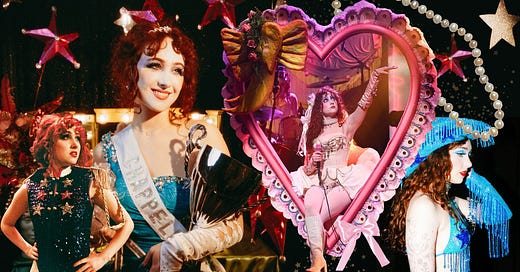


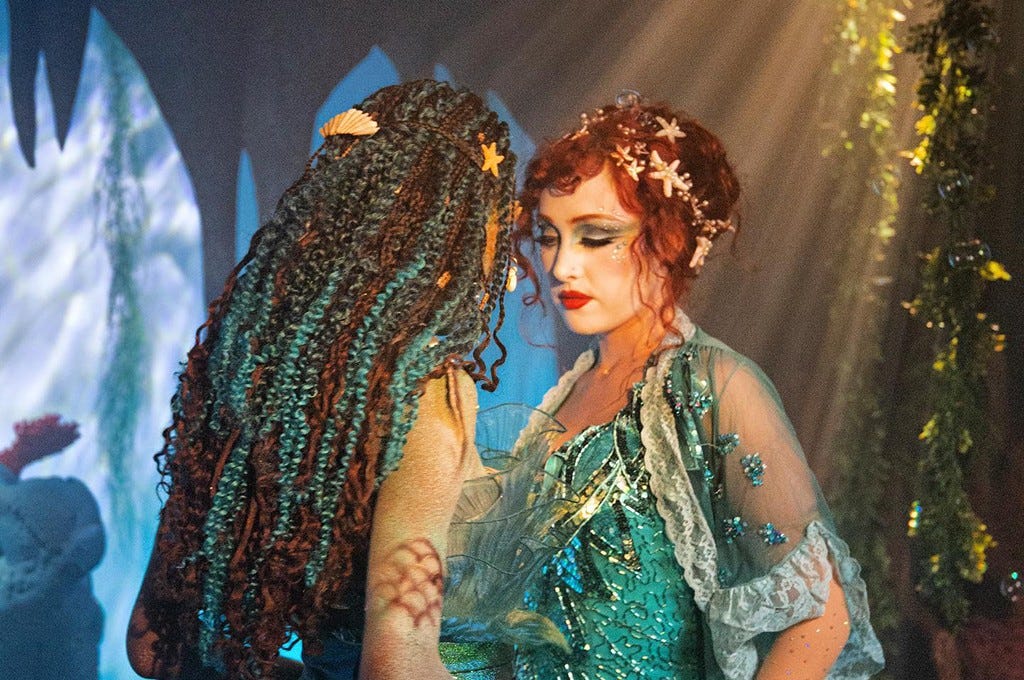


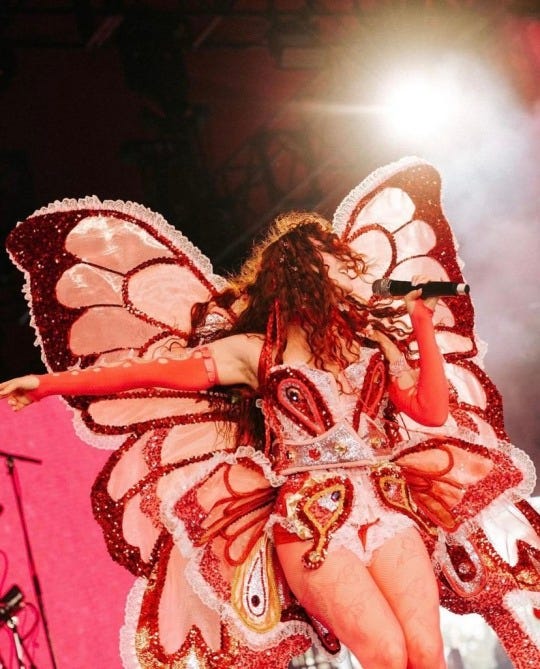
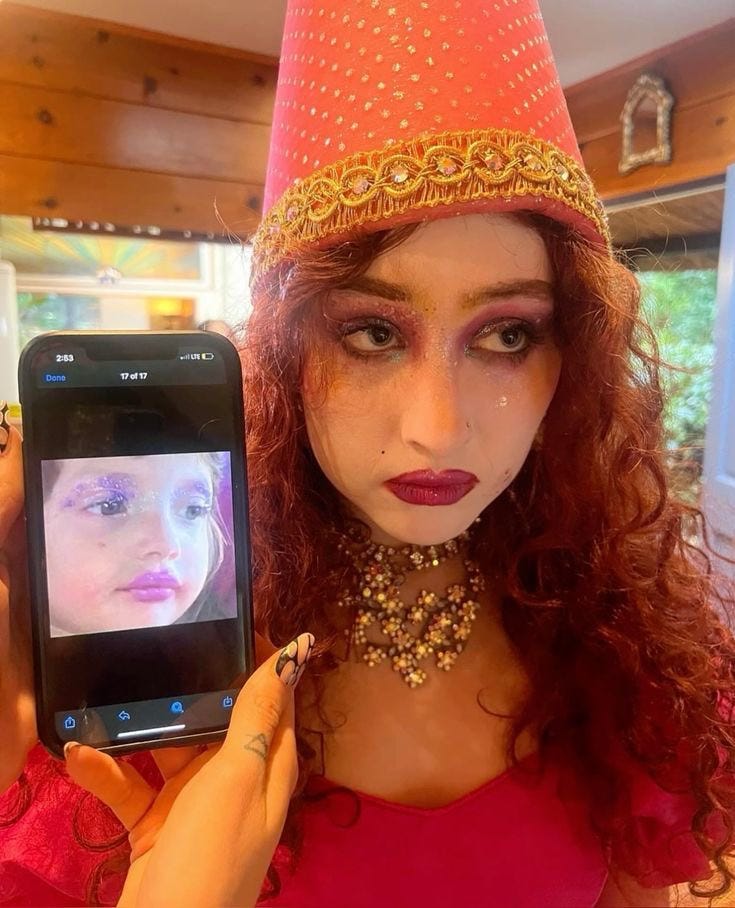

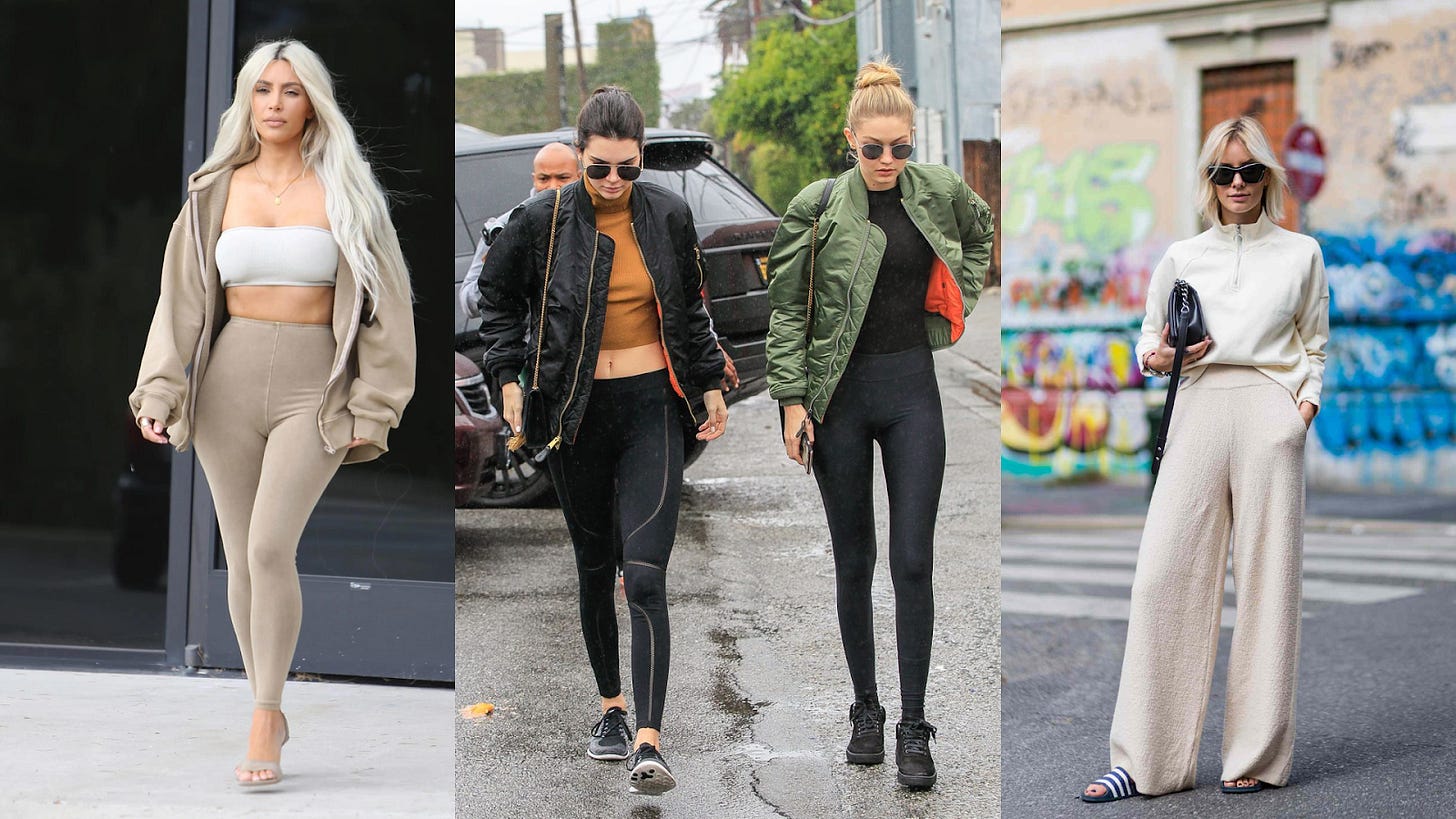

Chappell Roan is so joyful, hard not to embrace that!! I also think we saw a big shift around makeup when Euphoria first came out too (not to give sam levinson credit, that goes to makeup artist Doni Davy and the young actors who often contributed to the makeup direction!!) where people wanted to have wild colors, shapes, and literal gems all over their faces again, and a show that was big in the zeitgeist really reflected that shift in desire!
Yazzzz i am that athleisure green smoothie monochrome girl but yaazzzzz to the jazz and pizazz all the same. Love it